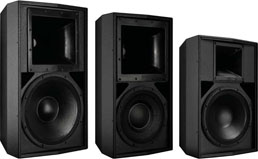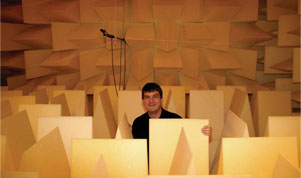Klein + Hummel Moves Into The Installation Market
If, as a manufacturer, you have built the bulk of your recent professional reputation on the back of designing studio monitors, the 21st century has been a challenging time. After all, large music recording studios are not exactly proliferating, and the smaller project studios that have replaced them seldom have the budget to spend on hand-built, hand-tested speaker technology.
K+H president Achim Gleissner explained the goal Sennheiser’s acquisition of Klein + Hummel was to give the group a more complete picture in installed sound. its acquisition’s studio business alone. And, sure enough, while development of new monitors has continued apace, K+H is now entering other markets with a sense of purpose that is almost tangible.
It would, in fact, be a mistake to view the company’s heritage as being dominated by the monitoring of audio recordings. For decades K+H produced hi-fi amplifiers, speakers and other products of the highest quality, before competition from the Far East rendered that business unsustainable. More pertinently, for the contractor market, the firm also has a long tradition of designing systems for low-voltage sound reinforcement in applications such as paging and voice evacuation.
It was the latter competency that K+H exploited last year, when it unveiled its TLP51 ruggedized column speaker, designed specifically for mounting alongside flat-screen LCD or plasma panels in digital signage applications. At Info- Comm this year, the company took things a step further with the introduction of the IS series of install speakers for performing arts, music, nightclub, and worship applications.
Strategically, the company has an important mission to fulfil within the Sennheiser group, as K+H President Achim Gleissner explains: “Up until now, different Sennheiser distributors in different territories have augmented their product offering by supplying a variety of third-party speaker brands. One of the ideas behind acquiring Klein + Hummel was to give the group a more complete picture in installed sound—with the same product, our product, all over the world. Our job is to add more and more pieces to the audio chain that runs from vibrating air to vibrating air.”

At InfoComm this year, Klein + Hummel introduced the IS series of install speakers for performing arts, music, nightclub, and worship applications. while the 12-inch 3-way design in the middle of the range is said to be unique in its configuration.
“InfoComm was very good for us,” reflects David McNutt, Industry Team Manager for Installed Sound at Sennheiser. “It’s hard to get around such a huge show in three days, and demo rooms fall onto secondary lists sometimes. But even so, we had a great turnout—there was a real buzz that we were bringing studio sound into an installed-sound product line. The result is that we already have quite a few specs out there that have been switched, even though we don’t yet have a full line of products.”
While sound quality is key to the appeal of Klein + Hummel loudspeakers, another important element of the IS series is its compatibility with K8, the digital audio transport protocol the company has created specifically for smaller projects and applications. Capable of moving 16 channels of digital audio and control data along a single Cat-5 cable with very low latency, at lengths up to 200 meters, K8 has been designed, above all, to be simple to implement.
“We looked at all the other protocols such as EtherSound, AES50 and so on,” Gleissner says. “They are great high-speed backbones, but if all you want to connect is a powered speaker or a two-channel amplifier, they are either too complex, or too expensive, or have too high a channel count—or all of these!”
Dave Theis, Product Manager, Installed Sound, describes K8 as the equivalent of the telecoms industry’s ‘last-mile connection’. “All you need to make it work is Cat-5 cable and RJ-45 connectors,” he adds. “You can pass digital audio and have all the benefits of that, without a computer. If you want to control the system in a detailed way, you can plug in a laptop and do that, but it’s not at all necessary.”
K+H is keen to point out that K8 is not a closed system, which is why the company has already developed breakout boxes to interface with analog audio, on the one hand, and EtherSound networks on the other. “For us, this is neutral ground,” Gleissner asserts. “Our goal with K8 is to make digital audio distribution simple. You don’t have to set an IP address, you don’t need IT skills. It bridges the gap between good old XLR, analog audio and IP.”
‘Move audio, see where it goes’ is the sell-line Klein + Hummel has been using to promote the advantages of K8. Dave Theis perhaps sums it up when he says: “The nice side-effect of K8 is that it brings digital audio to a much wider range of projects, where historically you either don’t have the expertise to install it or you don’t have the maintenance staff to run it.”
